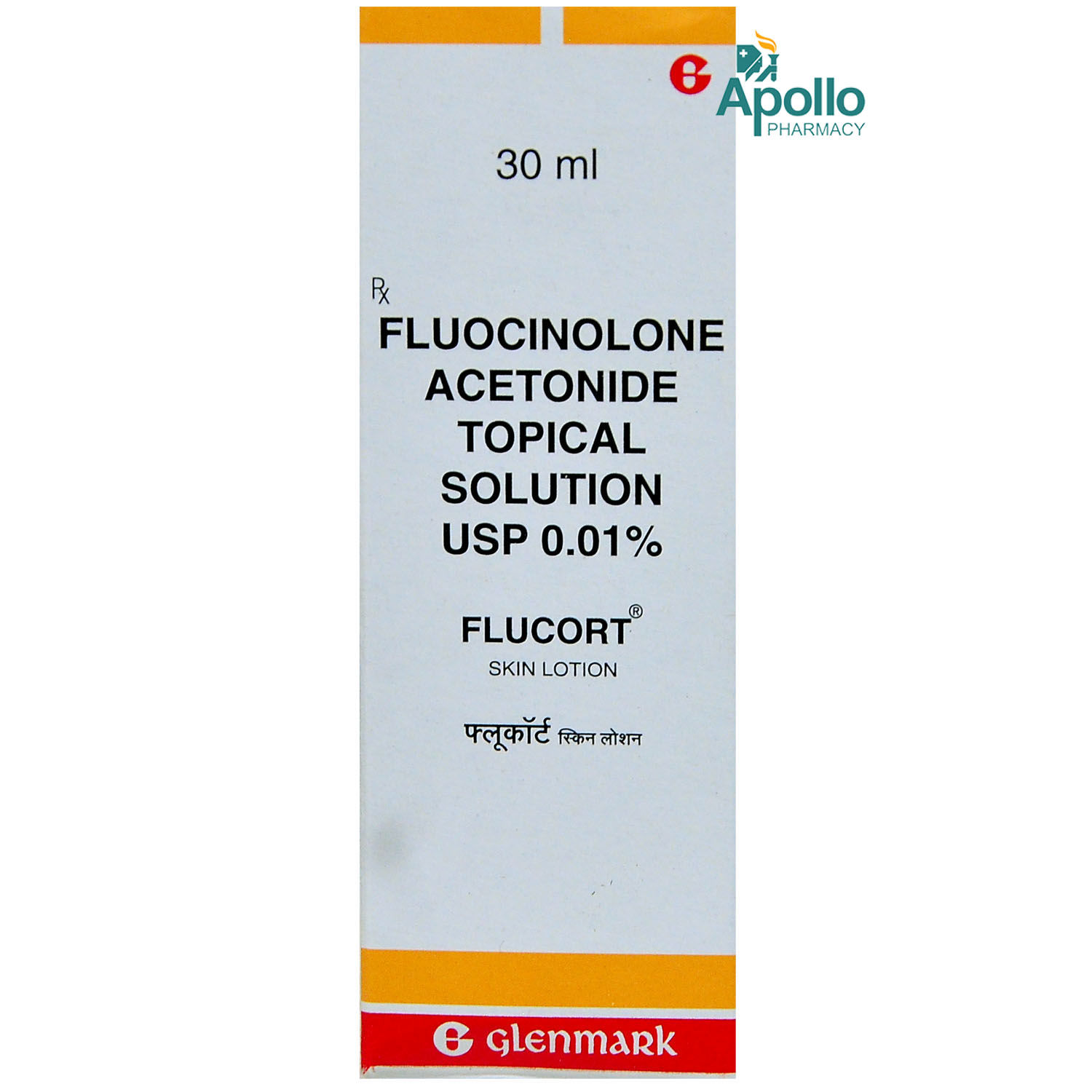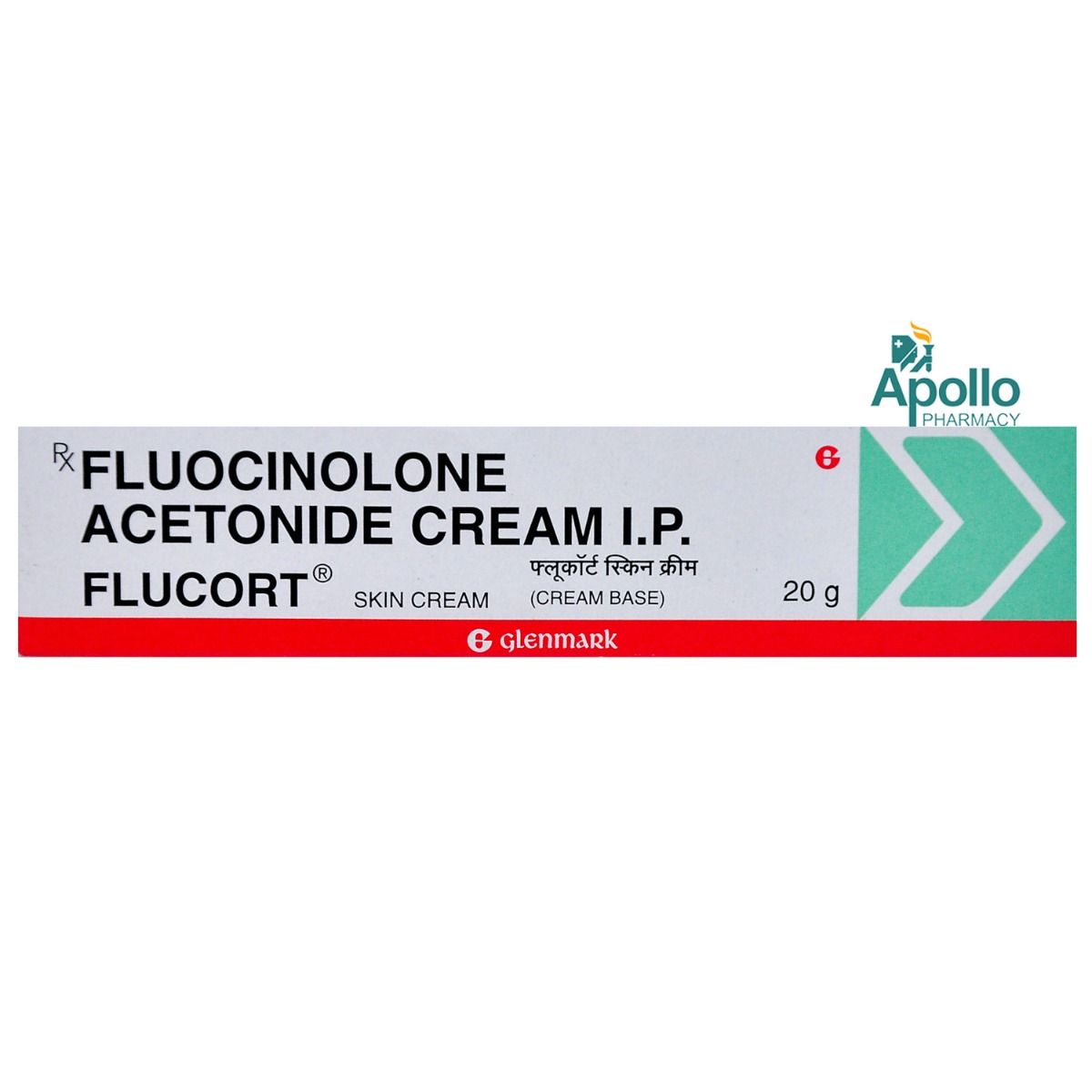Fluocinolone Acetonide
About Fluocinolone Acetonide
Fluocinolone Acetonide belongs to the class of medications called Corticosteroids. It is used to treat itching and inflammation caused by skin conditions that respond to topical corticosteroids (corticosteroid-responsive dermatoses), such as seborrheic dermatitis, psoriasis, eczema, and dermatitis.
Fluocinolone Acetonide contains ‘fluocinolone acetonide’, which belongs to the class of ‘corticosteroids’. It reduces the release of inflammatory mediators (chemicals that cause inflammation). It causes constriction of blood vessels, decreasing the access of cells to the injury site. This effect helps reduce swelling, pain, itching, and discomfort.
The common side effects of Fluocinolone Acetonide are burning, itching, irritation or dryness of the skin, pimples, a change in skin colour, small white or red bumps on the skin, and tiny red bumps or rash around the mouth. Most of these side effects of Fluocinolone Acetonide do not require medical attention and typically resolve on their own over time. However, if the side effects persist or worsen, please consult your doctor.
Do not use Fluocinolone Acetonide if you are allergic to any of its ingredients. Fluocinolone Acetonide is not recommended for the treatment of diaper rash. Avoid applying Fluocinolone Acetonide to broken skin, including cuts, scrapes, or open wounds. Before using Fluocinolone Acetonide, inform your doctor if you have any skin infection, a history of reaction to any steroid, liver disease, or an adrenal gland disorder. Inform your doctor if you are taking prescription, non-prescription medicines, herbal products, or dietary supplements to rule out any side effects or interactions. If you are pregnant or breastfeeding, consult your doctor before using Fluocinolone Acetonide.
Uses of Fluocinolone Acetonide
• Relief of Inflammatory Skin Conditions: Fluocinolone Acetonide is used to alleviate symptoms of corticosteroid-responsive dermatoses, such as redness, swelling, itching, scaling, crusting, dryness, and discomfort.
• Eczema (Atopic Dermatitis): Fluocinolone Acetonide helps reduce inflammation and itching associated with eczema.
• Psoriasis: Fluocinolone Acetonide aids in reducing redness, scaling, and plaque formation seen in psoriasis.
• Contact Dermatitis: Fluocinolone Acetonide is used to relieve itching and inflammation caused by allergic reactions or irritants.
• Seborrheic Dermatitis: Fluocinolone Acetonide is effective in treating scaling, redness, inflammation, and itchy patches in oily areas such as the scalp and face.
• Prurigo: Fluocinolone Acetonide helps reduce itchy plaques (lesions) and papules (raised patches/bumps) caused by prurigo.
• Lichen Planus: Fluocinolone Acetonide provides relief from inflammation, swelling, and irritation associated with lichen planus, a condition that affects both the skin and the inside of the mouth.
• Discoid Lupus Erythematosus (DLE)/Chronic Cutaneous Lupus: Fluocinolone Acetonide may be used as a part of the treatment plan to manage localised skin lesions in DLE (a chronic autoimmune skin disease).
Medicinal Benefits
Fluocinolone Acetonide contains fluocinolone acetonide, which belongs to the class of corticosteroids. It is effectively used to treat various inflammatory, allergic, and autoimmune diseases. It works by interfering with the inflammation process. It reduces the release of chemicals that cause inflammation. It causes constriction (narrowing) of blood vessels, decreasing the access of cells to the site of injury. This effect helps in reducing redness, swelling, itching, scaling, crusting, dryness, and discomfort.
Directions for Use
- Fluocinolone Acetonide is for external use only.
- It is recommended to apply Fluocinolone Acetonide 2-4 times a day or as directed by your doctor.
- Use it as per the instructions on the label or as advised by your doctor.
- Clean and dry the affected area of the skin. Then, apply a thin layer of the medicine to the affected area and gently rub it in.
- Wash your hands thoroughly before and after application.
- If Fluocinolone Acetonide accidentally comes into contact with the nose, mouth, or eyes, rinse thoroughly with water.
- Do not apply Fluocinolone Acetonide to broken skin or open wounds.
Storage
Side Effects of Fluocinolone Acetonide
- Burning, itching, irritation or dryness of the skin
- Pimples
- Change in skin colour
- Small white or red bumps on the skin
- Tiny red bumps or rash around the mouth
Drug Warnings
Do not use Fluocinolone Acetonide if you are allergic to any of its ingredients, peanuts, or any other medications. Inform your doctor if you are taking prescription, non-prescription medicines, herbal products, or dietary supplements to rule out any side effects or interactions. Fluocinolone Acetonide is not recommended for the treatment of diaper rash. Avoid applying Fluocinolone Acetonide to broken skin, including cuts, scrapes, or open wounds. Before using Fluocinolone Acetonide, inform your doctor if you have any skin infections, Cushing's syndrome (a condition caused by excessive levels of corticosteroid hormones), diabetes (high blood sugar), liver disease, or an adrenal gland disorder. If you are pregnant or breastfeeding, consult your doctor before using Fluocinolone Acetonide. It should be used with caution in children, as it may delay growth.
Drug Interactions
Drug-drug interactions: No interactions found.
Drug-food interactions: No interactions found.
Drug-disease interactions: Fluocinolone Acetonide should be used with caution in patients with skin infections, Cushing's syndrome, diabetes, liver disease, or an adrenal gland disorder.
Drug-Drug Interactions Checker List:
Safety Advice

Alcohol
cautionIt is unknown whether alcohol interacts with Fluocinolone Acetonide. However, avoid consuming alcohol as a precautionary measure.

Pregnancy
unsafeFluocinolone Acetonide is a category C medicine. Its safety and effectiveness during pregnancy have not been established. Please consult your doctor if you are pregnant or planning to become pregnant before using Fluocinolone Acetonide. Your doctor will prescribe it only if the benefits outweigh the risks.

Breast Feeding
cautionIt is unknown whether Fluocinolone Acetonide passes into breast milk. Please consult your doctor if you are breastfeeding before using Fluocinolone Acetonide. Your doctor will prescribe it only if the benefits outweigh the risks.

Driving
safe if prescribedFluocinolone Acetonide may not affect the ability to drive or operate machinery.

Liver
cautionThe use of Fluocinolone Acetonide should be exercised with caution in patients with liver disease. Dose adjustments may be necessary.

Kidney
cautionFluocinolone Acetonide should be used with caution in patients with kidney diseases. Dose adjustments may be necessary.

Children
cautionFluocinolone Acetonide should be used with caution in children as it may affect growth in some cases.
Habit Forming
Diet & Lifestyle Advise
- Eat a healthy and balanced diet, and ensure you get at least 8 hours of sleep a day for a speedy recovery.
- Include heart-healthy Omega-3 fatty acid-containing food drinks in your daily diet. You can also use low-fat cooking oils like olive oil, soybean oil, canola oil, and coconut oil.
- Please avoid contact with anyone who has chickenpox, measles, or tuberculosis, as it may cause you to contract the same infection that makes your body prone to infections.
- Opt for food and drinks high in Omega-3 fatty acids to get relief from pain, swelling, and inflammation. Omega 3 fatty acid-enriched foods include flaxseeds, walnuts, soybean oil, salmon, and tuna fish if you prefer non-veg.
- Prefer more whole foods and grains over processed ones. Limiting starch may also help decrease inflammation.
- Avoid consuming processed foods, especially those high in sugar and fat, as they can trigger inflammation.
- Try to fill half your food plate with fruits and veggies.
- Limit your salt intake and prefer herbs or spices like garlic, ginger, and turmeric, which are natural anti-inflammatories.
- Avoid alcohol as it can affect your stomach and intestines and limit the absorption of the essential nutrients required by your body.
Special Advise
- Do not use if there is an infection or sore in the area to be treated.
- Contact your doctor if your symptoms persist or do not improve after 2 weeks of using Fluocinolone Acetonide.
- Though it is unlikely, Fluocinolone Acetonide may temporarily slow down a child's growth if used for a long time. See the doctor regularly so your child's height can be checked.
Patients Concern
Disease/Condition Glossary
Seborrheic dermatitis: Seborrheic dermatitis is a skin condition that causes an itchy rash with dry, flaky scales on the skin that contains oil glands, such as the scalp, face, back, and upper chest.
Psoriasis: An autoimmune (immune system attacks healthy cells) skin disorder in which the skin becomes scaly, swollen, and itchy.
Dermatitis: It is a skin condition that causes itchy, dry skin, or a rash on swollen, reddened skin.
Eczema: It is also called atopic dermatitis. It is a condition characterised by red and itchy rashes that are seen on the skin, especially on the arms. It occurs due to allergens such as pollen, certain foods, or other irritants, including soap.
FAQs
Fluocinolone Acetonide belongs to the class of medications called Corticosteroids, used to treat itching and inflammation caused by skin conditions that respond to topical corticosteroids (corticosteroid-responsive dermatoses), such as seborrheic dermatitis, psoriasis, eczema, and dermatitis.
Fluocinolone Acetonide is a corticosteroid used in the treatment of inflammatory skin conditions. It also has antipruritic properties (reduces itching). It reduces the release of chemicals that cause inflammation, thereby reducing redness, swelling and itching of the skin.
While using Fluocinolone Acetonide, do not contact anyone who has shingles, chickenpox or measles. If you accidentally come in contact with any person having them, please inform your doctor immediately, as it requires special treatment if you have not had these illnesses.
Do not use for longer-term unless prescribed by your doctor as prolonged use may cause thinning of the skin and easy bruising.
Fluocinolone Acetonide should improve your condition within the first 2 weeks of your treatment. Consult your doctor if the symptoms do not improve.
The side effects of Fluocinolone Acetonide include burning, itching, irritation or dryness of the skin, pimples, a change in skin colour, small white or red bumps on the skin, tiny red bumps or rash around the mouth. Most of these side effects of Fluocinolone Acetonide do not require medical attention and typically resolve on their own over time. However, if the side effects persist or worsen, please consult your doctor.
Fluocinolone Acetonide is effective against Trichophyton species which cause athlete’s foot, ringworm infection, and jock itch (fungal infection of the skin in the buttocks or groin). Additionally, it is effective against yeast known as Candida, which commonly causes vaginal thrush (an infection caused by the overgrowth of yeast called Candida albicans).
Before using Fluocinolone Acetonide, clean and dry the affected area of the skin. Then, apply a thin layer of the medicine to the affected area and gently rub it in. Wash your hands thoroughly before and after application. If Fluocinolone Acetonide accidentally comes into contact with the nose, mouth, or eyes, rinse thoroughly with water.
You should see an improvement in the symptoms of skin infection, such as soreness or itching, within a few days of treatment with Fluocinolone Acetonide. However, signs such as scaling and redness may take longer to subside. Even if you feel better, do not stop using Fluocinolone Acetonide before the duration advised by your doctor.
The type of infection determines the duration of treatment. In general, therapy for tinea infection with Fluocinolone Acetonide is continued for 1 month, and for candida infection, it is continued for at least 15 days. Do not stop using Fluocinolone Acetonide on your own, even if you feel better, because the infection may recur as it takes some time to kill the fungus.
Fluocinolone Acetonide is safe for children only if it is used as prescribed by the doctor.
Keep the affected areas of the skin clean and dry, but avoid excessive rubbing. Although itching may make you want to scratch, avoid scratching as it will damage the skin’s surface and cause the infection to spread further. Avoid sharing towels, bath mats, and other personal items with others, as you may spread the infection to them.
Fluocinolone Acetonide may reduce the effectiveness of rubber contraceptives, like condoms and diaphragms. If you are using the cream on the penis or vulva, you are recommended to use alternative contraceptive methods, for at least 5 days after using Fluocinolone Acetonide.
No, do not stop using Fluocinolone Acetonide without consulting your doctor, even if you feel better, as your symptoms may improve before the infection is completely cured. Therefore, for better and complete treatment, it is advised to use Fluocinolone Acetonide for the prescribed duration.








